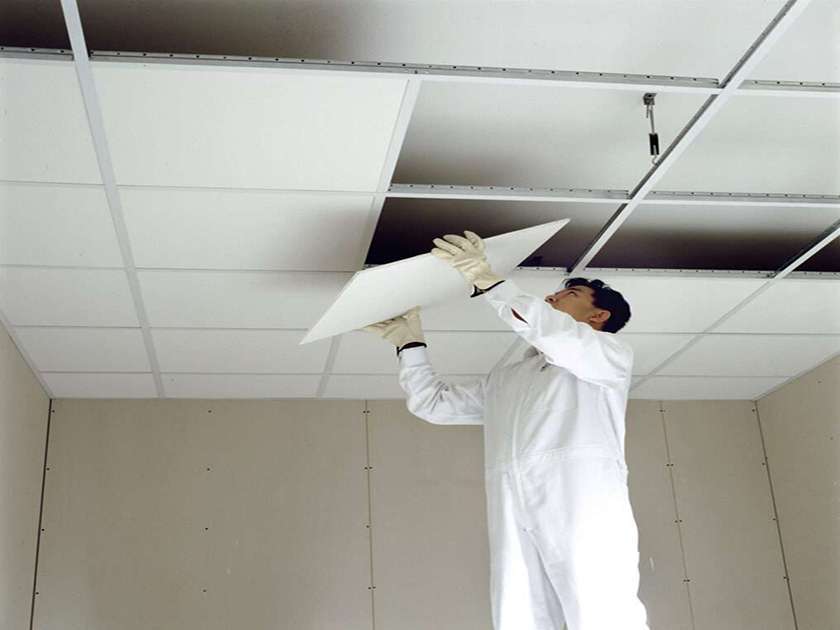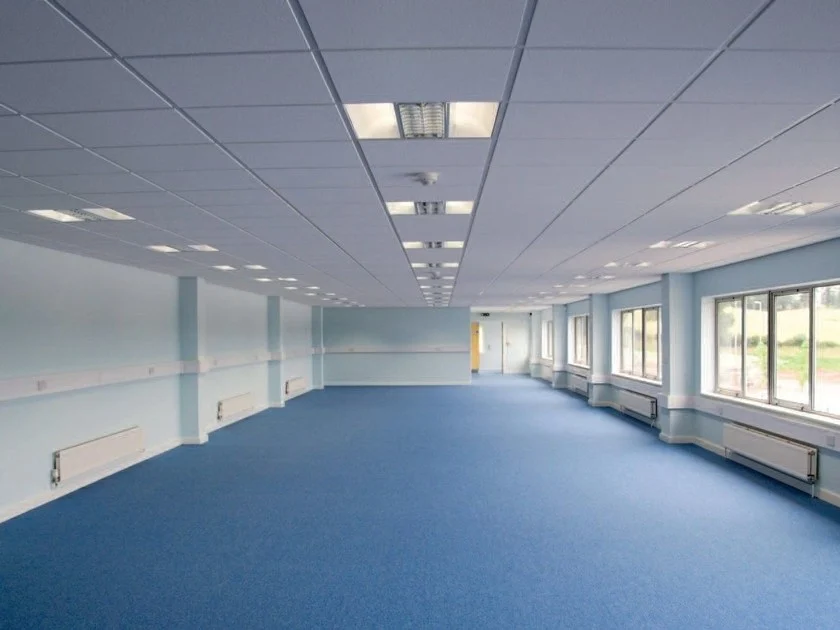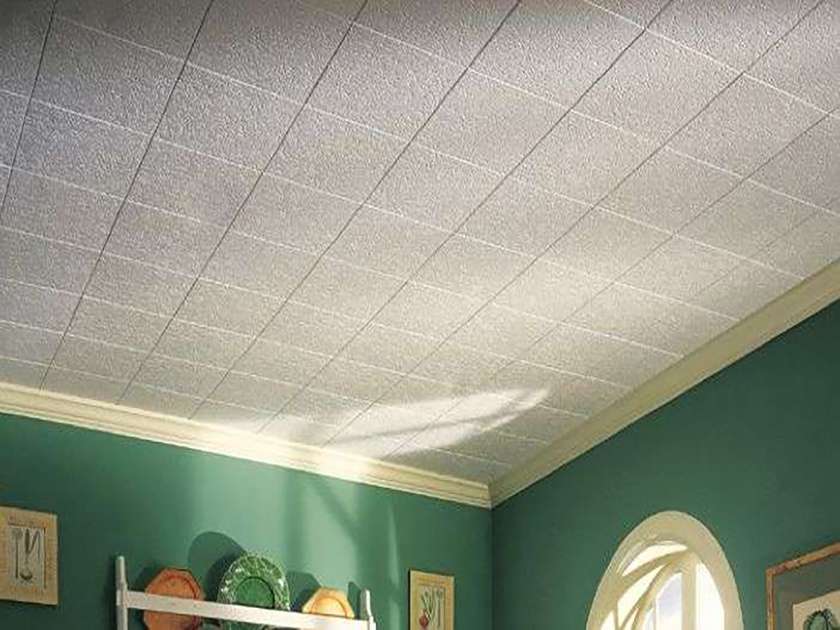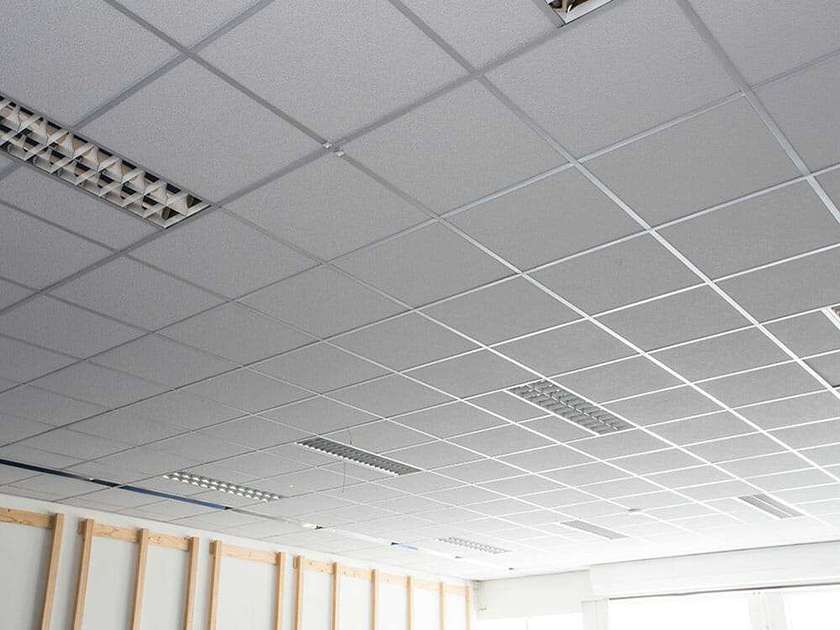Acoustic Ceilings
False suspended ceiling constructed from special grids that are inlaid with mineral fibre tiles. Available in Several Designs-all 60*60cm, Recessed Design Units and Gypsum Tiles in a variety of designs.
Types of Acoustic Ceilings
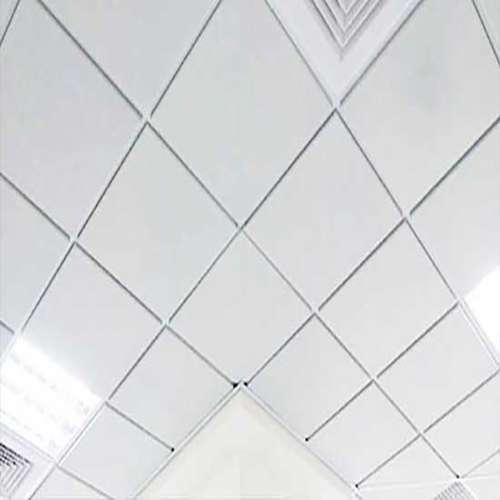
POP Ceiling Tiles
DESCRIPTION: Ceiling tiles, or ceiling panels, are construction materials used to cover ceilings. Placed in a steel or aluminium grid, they provide some thermal insulation but are usually designed to improve the aesthetics and acoustics of a room.
USES: They are commonly used for commercial, residential, and industrial applications, useful in, retail stores, offices, hotels, hospitals, and so on.
BENEFITS: It has low thermal conductivity.
It is perfectly fire-resistant and hence an excellent heat-insulating material.
It has no appreciable chemical action on paint and does not cause an alkali attack.
Gives a decorative interior finish. It is gypsum content provides a lot of shine and smoothness.
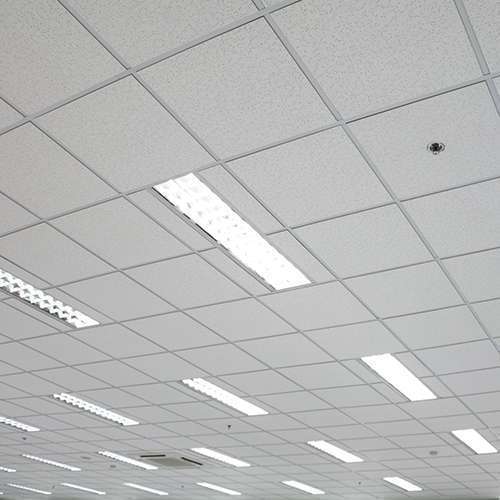
Vinyl Gypsum Ceiling Tiles
DESCRIPTION: The tiles are designed as one interior ceiling, especially for the hot environment. The tiles have been proven as a “new national building material covered with various patterns of PVC paper on the face and aluminum foil on the back, which can prevent dew and moisture. The tiles also can insulate the heat even under high temperatures.
USES: They are essentially used for concealing wires, fire safety, energy efficiency and to help in moisture and sag resistance. They are widely used in hotels, hospitals, schools, apartments, and many other public areas.
BENEFITS:
- Antifire & Waterproof.
- Antimoth & Dustproof.
- Elegant Design.
- Various Patterns.
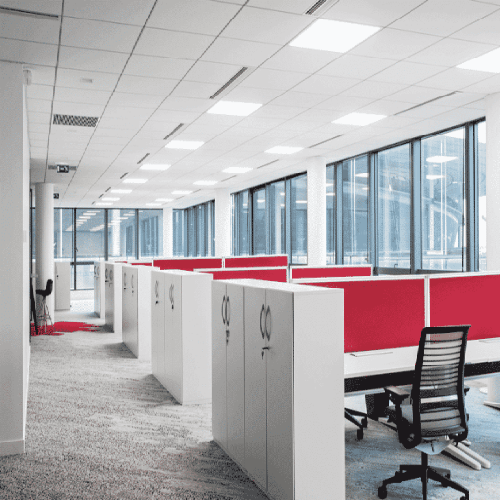
Mineral Fiber Ceiling Tiles
DESCRIPTION: AMF Mineral Fiber Ceiling tiles are made with cutting-edge technology for a smooth finish that comes in a white appearance and provides excellent levels of sound absorption, reflection, and attenuation. These tiles offer an acoustics performance with improved light reflectance and anti-sag properties.
USES: Ideal for offices, meeting or conference rooms, churches, auditoriums, classrooms, and corridors for commercial buildings.
BENEFITS:
- Excellent acoustic performance.
- Enhanced light efficiency.
- Better accessibility.
- Humidity resistance.
- Hygiene.


